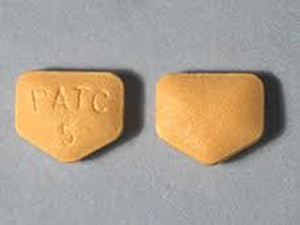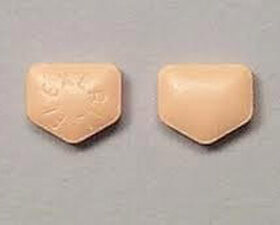- Your cart is empty
- Continue Shopping

Shop
Buy Flexeril Online

Buy Flexeril Online Service today for a quick and hassle-free solution to your muscle pain needs. Simply Order Online and Experience Rapid Relief from your ailments.
What is Flexeril?
Flexeril is the brand name for cyclobenzaprine hydrochloride. It is a muscle relaxant that works by blocking nerve impulses (or pain sensations) that are sent to your brain.
Flexeril is in a class of medications called skeletal muscle relaxants.It is used to treat skeletal muscle disorders including pain or damage in conjunction with rest and physical therapy.
Flexeril was initially approved by the FDA in 1977. It is commonly prescribed for short-term relief of muscle spasms from strains, sprains, and other muscle injuries. Flexeril is also used to treat fibromyalgia or certain pain syndromes.
Flexeril Uses
The main purpose of the muscle relaxant drug Flexeril (cyclobenzaprine) is to treat acute musculoskeletal disorders by reducing skeletal muscle spasms and the discomfort they cause. Some of the main uses of Flexeril include:
FDA Approved Uses
Treatment of acute muscle spasms associated with painful musculoskeletal conditions. Flexeril is approved by the FDA for short-term use (up to 2-3 weeks) to treat muscle spasms from strains and sprains.
Flexeril Dosage
- Flexeril comes in tablet form, available in 5 mg and 10 mg strengths.
- The typical starting dosage for Flexeril is 10 mg taken by mouth three times per day. Doses are usually taken every 6 to 8 hours, but should not exceed 20 mg total per day.
- For elderly patients over 65 years old or patients with liver problems, the recommended starting dose is Flexeril 5 mg taken by mouth three times per day. The maximum daily dose should not exceed 10 mg for these patients.
- Flexeril is meant for short-term use only. It should be taken for 2 to 3 weeks at most. Long-term use can lead to dependence and tolerance.
- Patients should follow their doctor’s specific dosage instructions. Depending on the patient’s reaction and tolerance, the dose may be changed. Doses can be tapered down before discontinuing use to minimize withdrawal symptoms. Flexeril is not intended for long-term maintenance therapy.
Black Box Warnings
- Flexeril has a black box warning about increased risk of serious adverse reactions, including death, in elderly patients with dementia-related psychosis.
- There is a higher chance of death for elderly people using antipsychotic medication for psychosis due to dementia. Flexeril is not approved for the treatment of patients with dementia-related psychosis.
Discontinuing Flexeril
When stopping Flexeril, it’s important to taper off the medication gradually rather than stopping abruptly. This helps minimize withdrawal symptoms.
Flexeril has a short half-life, so withdrawal symptoms can start within 12-48 hours after the last dose. Potential withdrawal symptoms include:
- Anxiety
- Insomnia
- Restlessness
- Increased heart rate
- Muscle tension and spasms
Flexeril vs. Other Muscle Relaxants
Flexeril (cyclobenzaprine) is a muscle relaxant that works by blocking nerve impulses that trigger muscle spasms. It’s primarily used short-term to treat acute muscle spasms.
Some other common muscle relaxants include:
- Baclofen – Works by blocking signals between nerves and the spinal cord. Used for muscle spasms caused by multiple sclerosis, spinal cord injury or disease. Associated with drowsiness.
- Diazepam – A benzodiazepine that works by enhancing the effects of GABA in the brain. Used for muscle spasms caused by upper motor neuron syndrome. Causes sedation and dependence.
- Methocarbamol – Works by blocking nerve impulses. Used for muscle spasms caused by injury or other conditions. Has less sedative effects than cyclobenzaprine.
- Orphenadrine – Blocks nerve impulses. Used for injury-related muscle spasms. Causes drowsiness.
- Tizanidine – Works by decreasing nerve impulses. Used for spasticity caused by multiple sclerosis, spinal cord injury. May cause low blood pressure, drowsiness.
Compared to other muscle relaxants, Flexeril is considered very effective at relieving acute muscle spasms. However, it’s more likely than some alternatives to cause side effects like dry mouth, drowsiness, dizziness and fatigue. Its sedative effects can make it difficult to operate vehicles or machinery when taking Flexeril.
Overall, Flexeril is a good option for short-term relief of severe muscle spasms. For longer-term treatment, medications like baclofen or tizanidine may be preferred to avoid Flexeril’s strong sedative effects. The choice depends on the cause and duration of muscle spasms.
Flexeril and Pregnancy/Breastfeeding
- Flexeril has not been extensively studied for safety and efficacy during pregnancy. However, available data indicates potential risks that should be carefully considered before using Flexeril during pregnancy.
- For breastfeeding women, Flexeril passes into breast milk in low concentrations. The effects on a breastfed infant are unknown. Considering the potential risks, caution is advised when taking Flexeril while breastfeeding. Infants may experience drowsiness, feeding difficulties, and other side effects. If use of Flexeril is medically necessary, breastfeeding mothers should monitor the infant closely for any adverse reactions. However, whenever possible, alternatives that are safer for breastfeeding are preferable.
In summary, Flexeril can cross the placenta during pregnancy and enter breast milk after delivery. There are potential risks to the fetus and breastfeeding infant that must be carefully weighed against the benefits before using this medication. Pregnant and breastfeeding women should discuss treatment options thoroughly with their healthcare provider.


